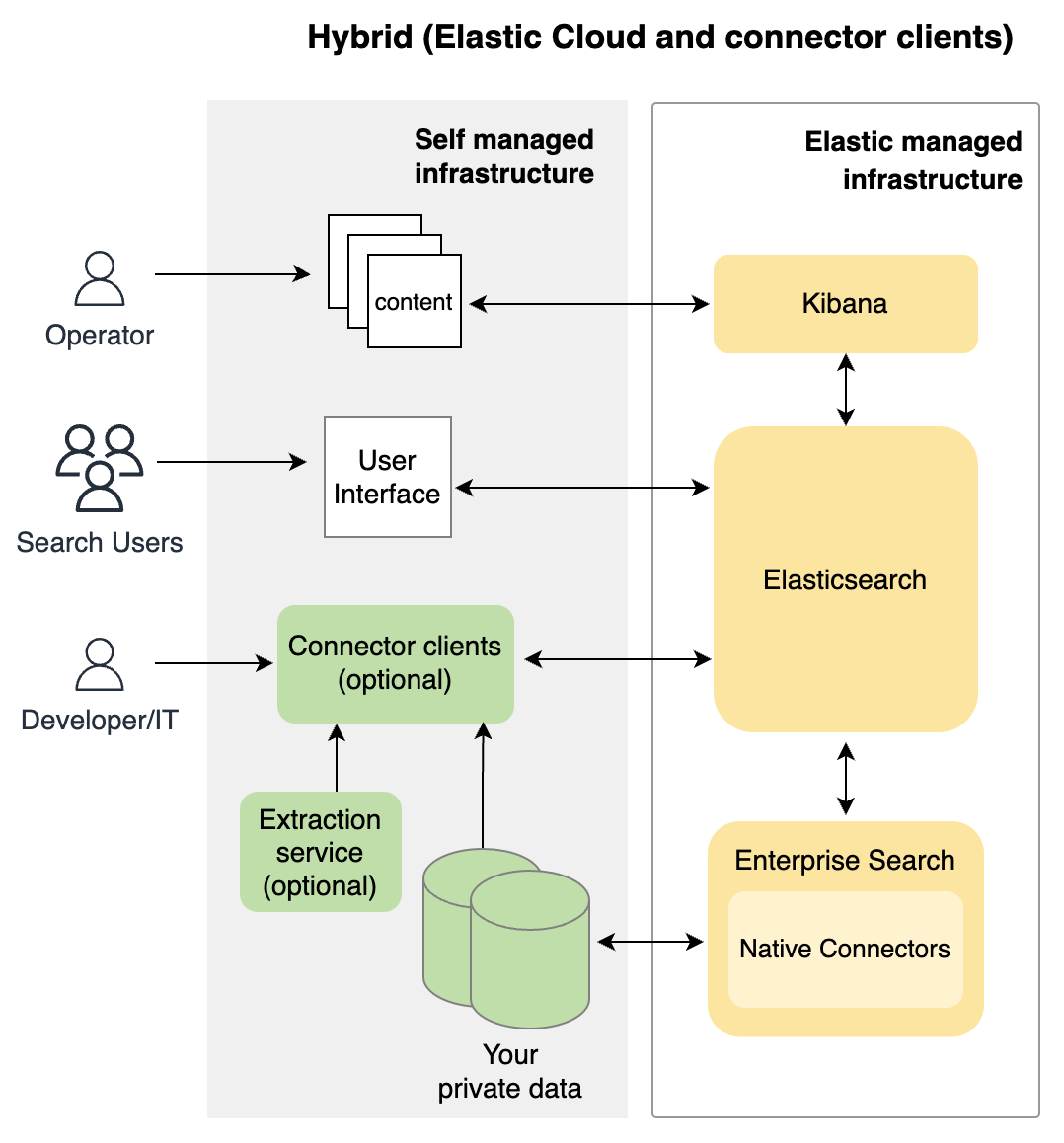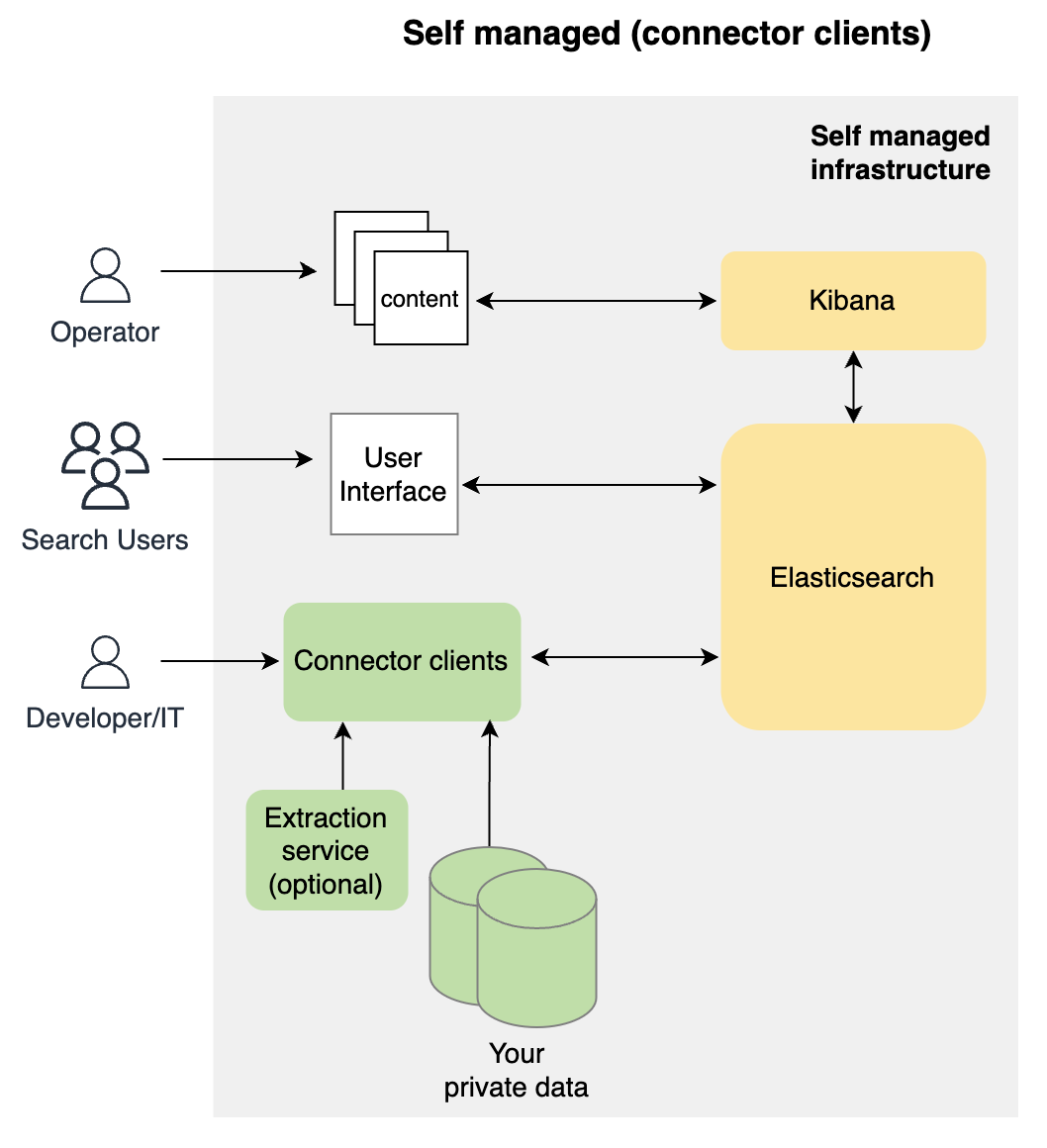Internal knowledge search architecture
editInternal knowledge search architecture
editThe following section provides a high-level overview of common architecture approaches for the internal knowledge search use case (AKA workplace search).
Hybrid architecture
editData is synced to an Elastic Cloud deployment through native connectors and/or self-managed connector clients. A self-managed search application exposes the relevant data that your end users are authorized to see in a search experience.
Summary:
- The best combination in terms of flexibility and out-of-the box functionality
- Integrates with Elastic Cloud hosted native connectors to bring data to Elasticsearch with minimal operational overhead
- Connector clients allow enterprises to adhere to strict access policies when using firewalls that don’t allow incoming connections to data sources, while outgoing traffic is easier to control
- Provides additional functionality available for connector clients such as the Extraction Service
- Basic functionality available for Standard licenses, advanced features for Platinum licenses
The following diagram provides a high-level overview of the hybrid internal knowledge search architecture.

Self-managed architecture
editData is synced to an Elastic deployment through self-managed connector clients. A self-managed search application exposes the relevant data that your end users are authorized to see in a search experience.
Summary:
- Gives flexibility to build custom solutions tailored to specific business requirements and internal processes
- Allows enterprises to adhere to strict access policies when using firewalls that don’t allow incoming connections to data sources, while outgoing traffic is easier to control
- Provides additional functionality available for connector clients such as the Extraction Service
- Feasible for air-gapped environments
- Requires Platinum license for full spectrum of features and connector clients
The following diagram provides a high-level overview of the self-managed internal knowledge search architecture.
